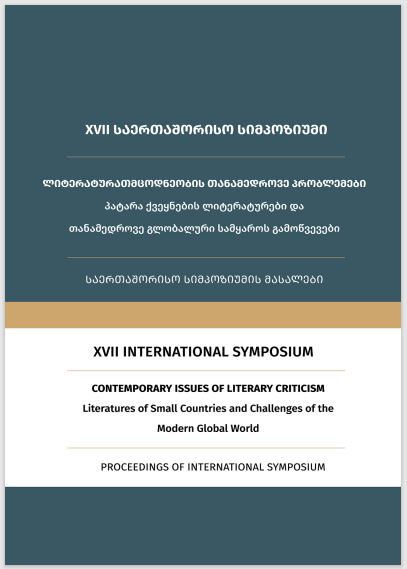Polyphony in Literature – Contemporery Postmodern Prose (Based on the Novels "The Valley of Wizards" by Kanal Abdullah and "Hopscotch" by Julio Cortazar)
Published 2024-12-20
Keywords
- M. Bakhtin,
- social parameter,
- a polyphony of the text,
- modernism,
- postmodernism
- interpreter and character ...More
Abstract
Literature reflects society, and people with certain sociological parameters through the meaning of speech, culture, philosophy, history, and science closely assist literature. The transition from one historical period to another naturally affects literary art as well, due to changes in socio-cultural and philosophical codes of society. Transition from the modern era to the postmodern era changed dominating thoughts and human typology, as well as the diversity in perceiving reality, thus becoming also as a topic of the new literary period, making the literary text open to various interpretations and polyphony, determined by the number of interpreters and leading to polyphony. Polyphony is a literary conceptualization related to the dialogism theory by Mikhail Bakhtin (“Слово в романе”, 1934), who created dialogism as a response to monological thought style. Bakhtin considered dialogism as a means of mutual communication between the main character and other characters and as an internal dialogue of a character.
Polyphony is the reflection of this dialogism. Bakhtin argued that all works have a polyphonic quality. Thus, a literary work is read by tens, hundreds, and thousands of readers, meaning it engages in dialogue with tens, hundreds, and thousands of readers. Each phrase, each word in the work carries as many public meanings as the number of readers who read it. Thus, the work acquires polyphonic qualities carrying these public meanings within itself. The classical and modern understanding of works with a single central character loses its relevance in the postmodern era. Different characters load the work with different meanings within their individual consciousness.
In this study, the creativity of postmodern writers J. Cortazar and K. Abdulla, as examples, is explored in terms of the independent expression of the diverse interpreters' worldviews within the text, as well as the representation of diversity through the presence of multiple interpreters as one of the formal features of the text.

